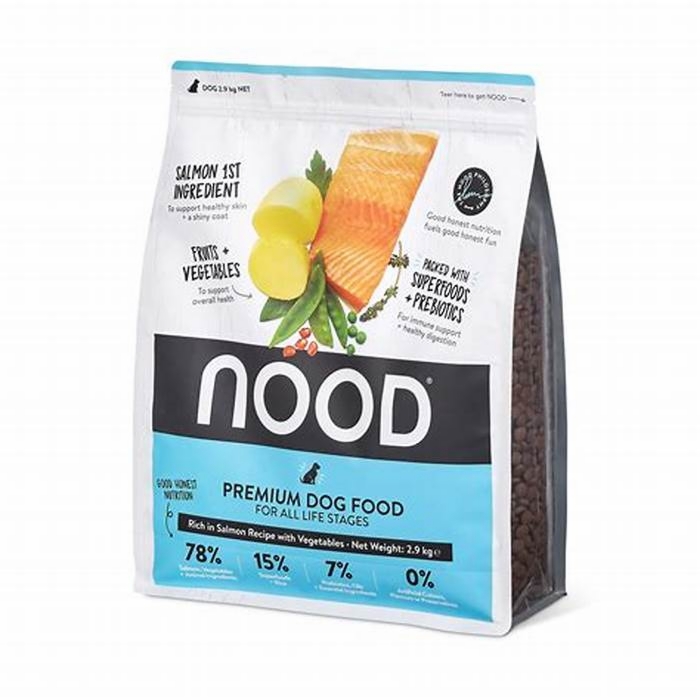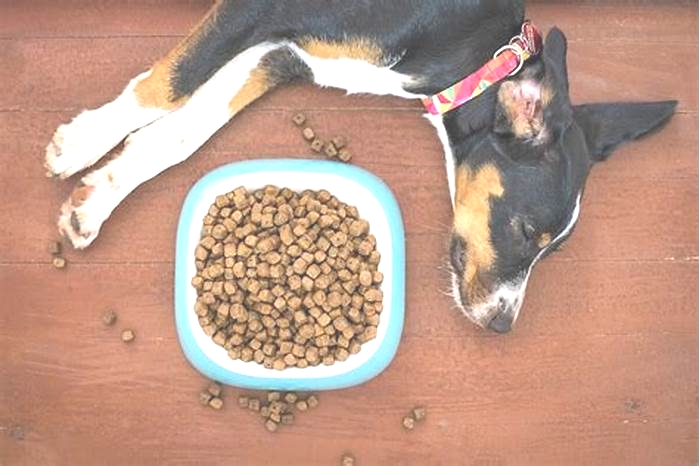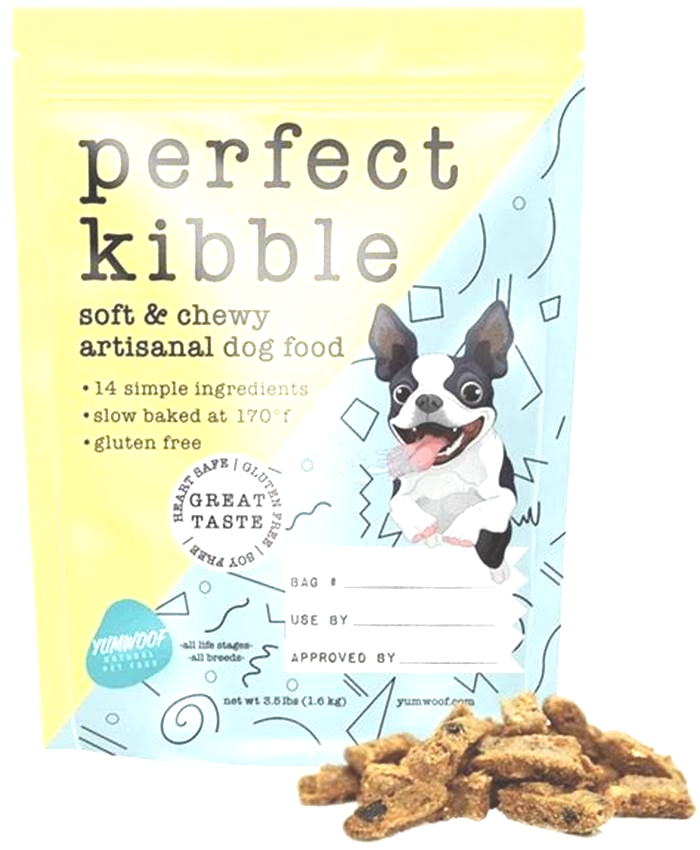can you mix kibble with wet dog food
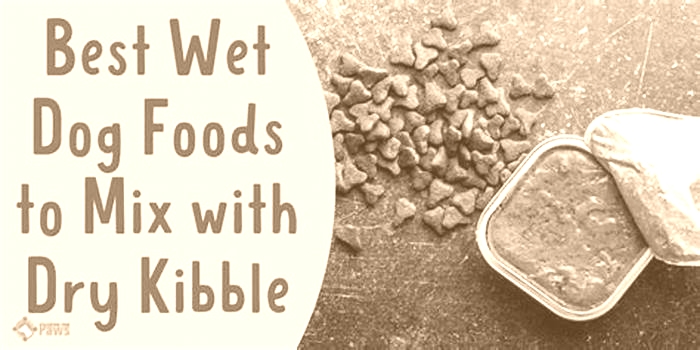
Mixing It Up: Is It Safe to Combine Different Dog Food Brands
Have you ever stood in the pet food aisle, overwhelmed by the endless choices, and wondered if your dog might enjoy a little variety in his bowl?
Or perhaps youve pondered whether mixing brands could be the secret sauce to balancing your fur babys diet.
You can mix dog food brands, but it should be done carefully. Ensure the mix offers balanced nutrition, is the same life stage, and doesnt cause overfeeding. Gradually transition to new brands to prevent digestive issues.
From the whys and hows to the dos and donts, were sniffing out the truth behind mixing dog food brands. Is it a culinary adventure or a recipe for trouble?
This article is like the canine version of a dinner party but with kibble and canned food instead of canaps and cocktails.
Lets unleash the facts!
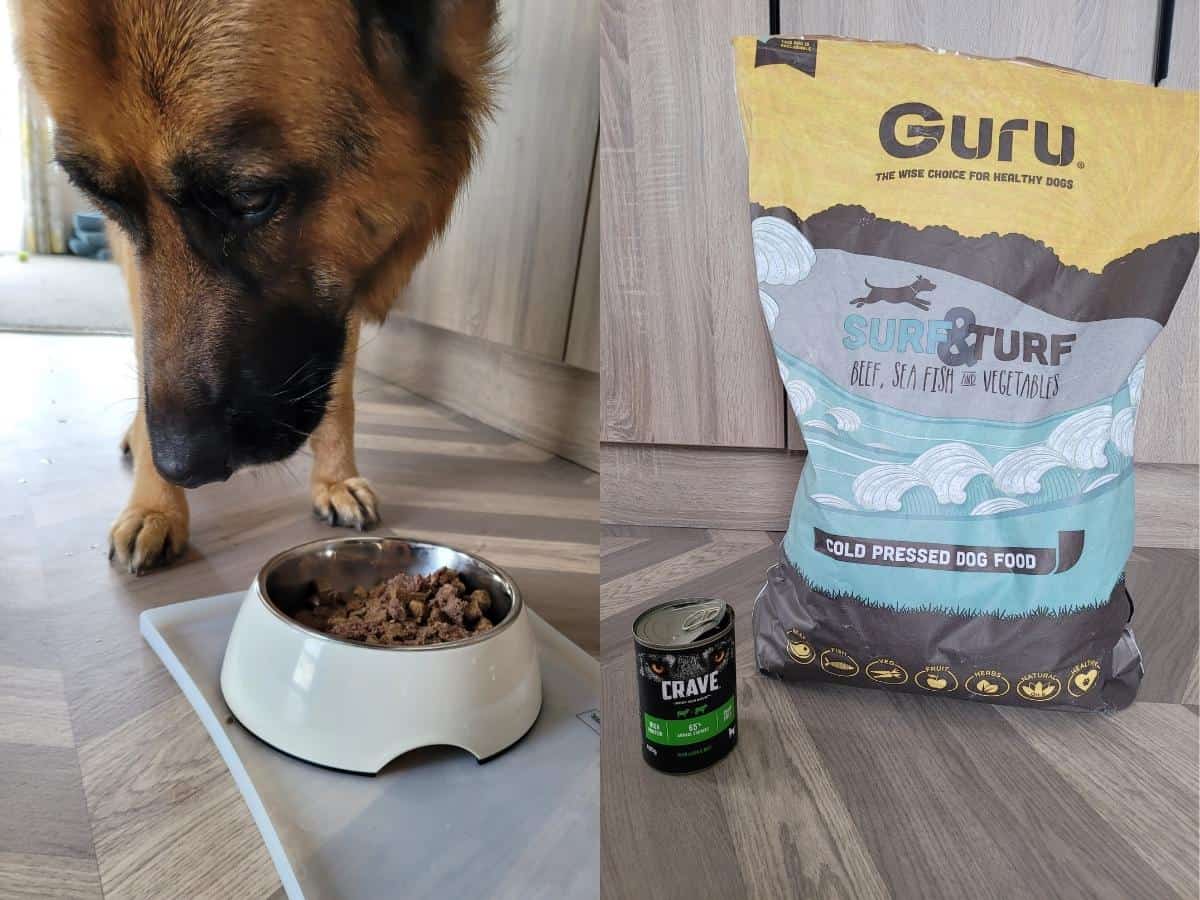
Can You Mix Dog Food Brands?
Mixing dog food brands is a practice adopted for three reasons. It is generally harmless and is even recommended in some situations, but there is one type of dog food mixing that isnt advisable.
To elaborate on this, we must start with the three reasons people want to mix dog food brands:
- They are transitioning their dog to a new type of dog food
- They are trying to make food more palatable for their dog
- Theyre trying to adjust their dog food expenses
Transitioning Your Dog To A Different Brand
Mixing two different dog food brands is an acceptable practice when switching your dogs diet. Abrupt switches can be bad for your dogs health.
Moreover, your dog might not be as receptive to his new diet. Mixing dog food brands for transitioning purposes follows these stages:
- 90% brand A (primary food) + 10% brand B (new brand)
- 80% brand A + 20% brand B
- 70% brand A + 30% brand B
- 50% brand A + 50% brand B
- 20% brand A + 80% brand B
- 10% brand A + 90% brand B
This type of food mixing is temporary until your dog gets used to his new food. It is often the recommended method of making transitions in your dogs diet, especially if he starts to get bored with his food.
You can adjust the ratio and percentages of brands A and B in his food mixture.
The underlying principle is that the brand he is fond of must initially constitute most of the mix. You can reduce it gradually until it is practically non-existent.
Some dogs can transition to a different brand without any stomach problems quite quickly, whereas others may need a few weeks to transition over fully. Its best to take things slowly to avoid any stomach upset.
Togiveyourpetsdigestivesystemtimetoacclimatize,Iadvisegraduallyblendinganincreasingquantityofthenewfoodintotheolddietoveratleastoneweek.
Spreading out the switchover allows your dog to adjust and adapt to the new food.
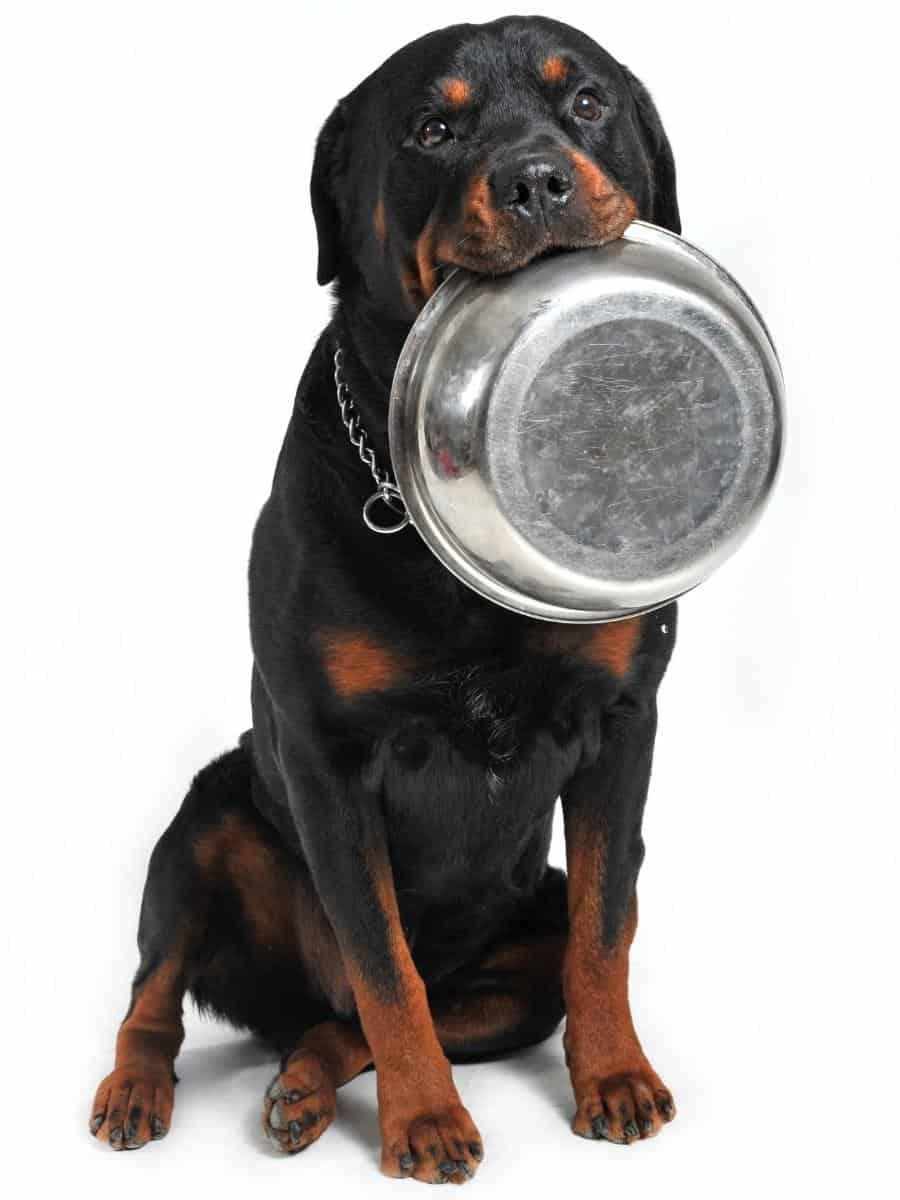
Making Food More Palatable
The second reason is more specific to fussy eaters. If your dog doesnt like to eat dry dog food, you might want to mix in some wet food. If he doesnt like processed dog food, you might mix it with organic dog food.
The underlying principle, in this case, is that you disguise the taste of the food he isnt fond of with food that he likes. This is a perfectly acceptable solution if both brands are high quality.
Pro tip! If you have a picky-eating dog and are on the fence about mixing dog food brands, there are many things you can add to kibble. Head to this article to learn more: 15 Tasty Toppers to Mix with Dry Dog Food to Tempt Your Dog.
Pro tip! Sometimes, I also add water to dry dog food to mix things up and change the aroma and palatability of the food. This makes the food into a yummy gravy without additional expense.
Can You Mix Different Brands of Wet and Dry Food?
You can mix different wet and dry dog food brands as long as both brands offer healthy nutrition. You should not mix subpar dog food with high-quality dog food, regardless of whether it is dry or wet.
It is also not advisable to mix expired wet or dry dog food with an alternative.
Mixing dog food is not like mixing medicines. Thats why you dont have to overthink potential complications and reactions.
Remember, dog food brands know that dogs might be eating any number of things before or after consuming their food.
Thats why dog food is generally free of ingredients that might cause an adverse reaction when co-consumed with other food.
Mixing can make it easy to overlook some problems with one or the other brand. And that should not happen.
Before you mix two brands of dog food, you need to ensure that they:
- Are nutritious
- Are not past their use by dates
- Do not include anything that your dog is allergic to
If youre a regular reader of my blog, youll know that I often like to feed my German Shepherd cold-pressed dry food with a wet food topping.
Both types will be different brands of high-quality foods to ensure her canine nutritional needs are met.
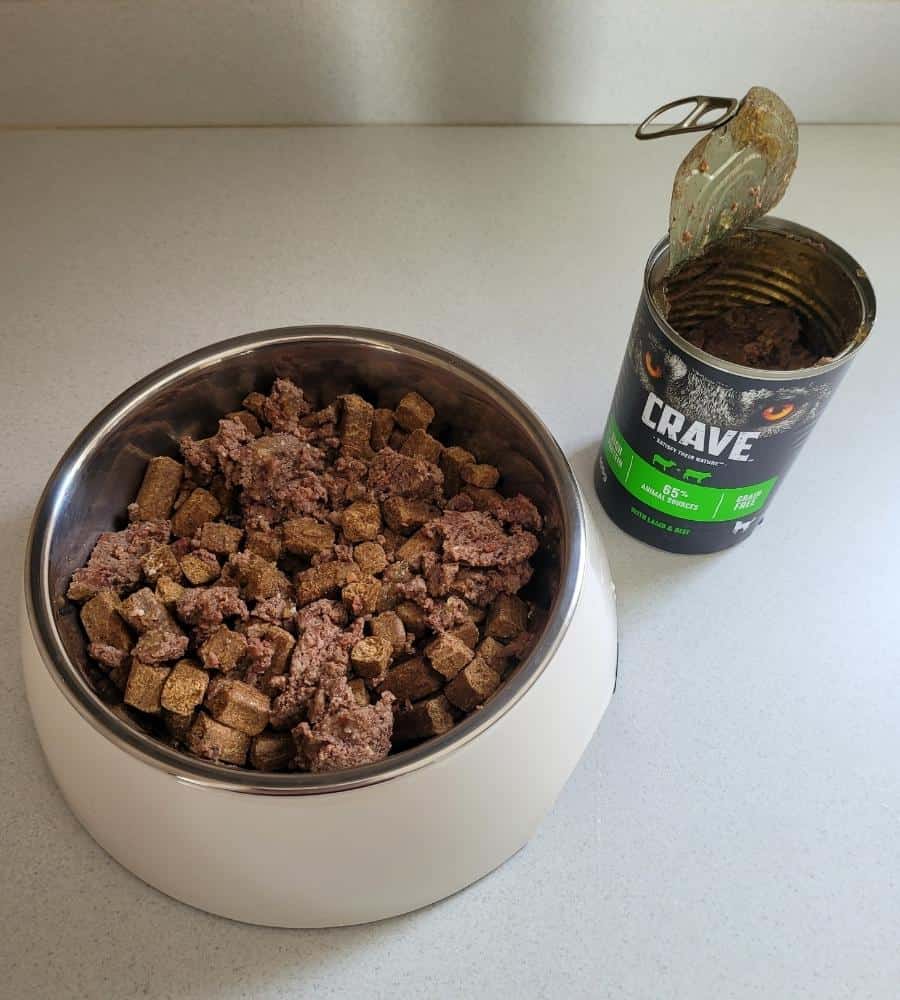
Mixing For Budget
This type of dog food mixing is discouraged because subpar dog food is not nutritious when mixed with high-end dog food. It only brings down the nutritional density of good quality dog food.
It is particularly dangerous when, instead of mixing a cheap brand with an expensive one, dog owners mix expired food with fresh food. That makes the overall mix unhealthy.
How To Mix Dog Food Brands
In this section, I will cover the best practices of mixing dog food brands in chronological order so it forms a guide you can follow. These draw from my experience and my vets advice.
Find Different Brands That Reflect The Same Life Stage
Mixing dog food brands is easy once you acquire the right food. The first step is, therefore, the most crucial one. You must get two different dog food brands whose nutritional requirements reflect the same stage of development.
Dont buy senior dog food and mix it with puppy food. World of Dogz
Please note that same-stage dog food doesnt mean the same texture. You dont need to get dog food that has the same texture or similar aroma. It should just be nutritionally adjacent to the dog food that your dog is used to.
If youre getting just one new brand because you already have dog food at home, take down the following specifics of the brand you have at home and find another brand that matches them:
- Dog breed The food brands should belong to the same category. The three broad categories are big-dog, medium-sized-dog, or small-dog food. Dont mix Chihuahua dog food with German Shepherd food and vice-versa.
- Dog age The food brands should broadly match the same category. Dog food is divided into puppy food, adult dog food, senior dog food, or food suitable for all life stages. Dont mix puppy food with senior dog food and vice versa.
How to Mix Canned with Kibble
Mixing wet and dry dog food is a little more complex than adding water to kibble or mixing two servings of dry dog food. The complication comes from the different nutritional concentrations in canned and dry dog food. Here is how you can mix wet and dry dog food.
1. Use Food For The Same Dog Breed And Age
As covered earlier, it is crucial that big dogs eat food meant for big dogs and small dogs consume food formulated for small breeds. Both wet and dry options must be for the same breed type (large, medium, or small) and the same age range (puppy, adult, or senior).
2. Mix 1 Part Wet Dog Food With 3 Parts Dry Dog Food
Initially, the wet food should serve to moisten the dry food. It cannot overpower the crunchy dog food, or your dog might get suspicious and reject it.
Unlike water, wet dog food must go at the bottom of the dry food. This should not be confused with a topper, which is appetizing food that goes at the top of the bowl to get the dog to chew on his food.
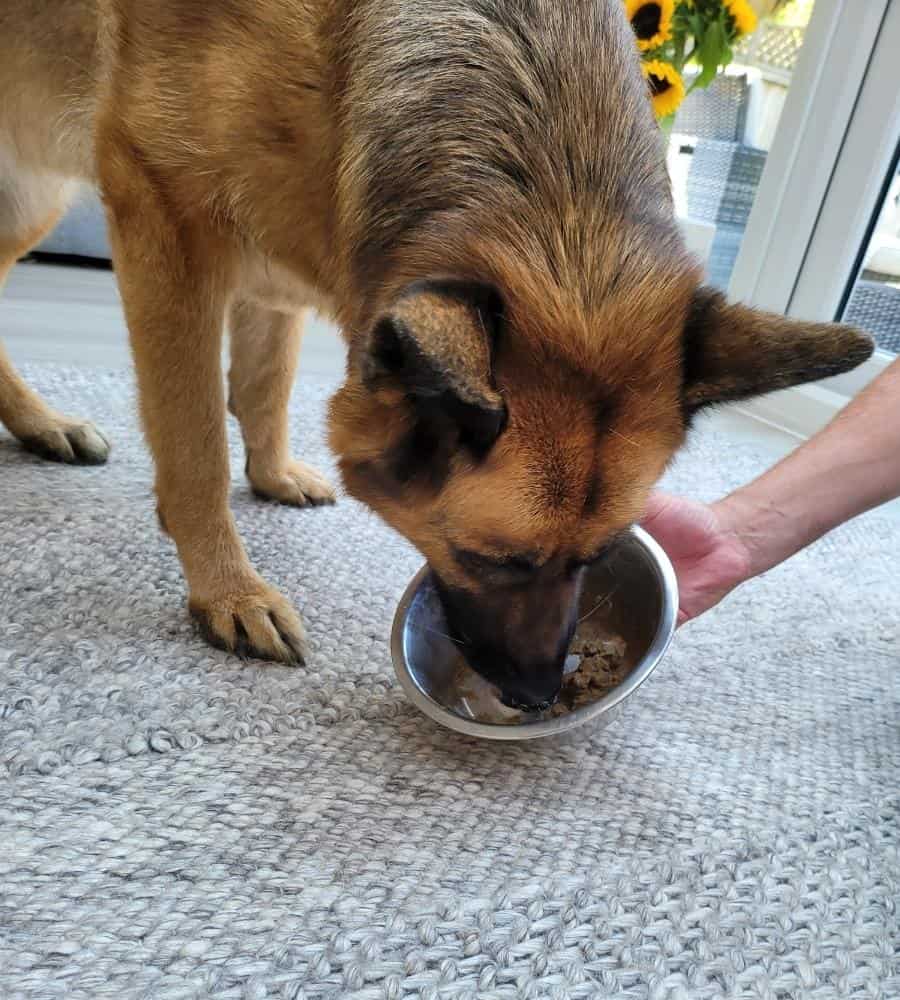
3. Maintain or Increase the Wet Food Ratio
It is not mandatory to increase wet dog food beyond 25%. But if you want to increase your dogs wet food intake, you can decrease the dry food in the right proportion so your dog doesnt overeat.
Remember that a quarter cup of most dry dog food equals 3 ounces of wet dog food. And an average adult dog needs an ounce of wet dog food per pound of body weight.
Reading the serving suggestions and portion information on the package is also highly recommended. You must also factor in the number of meals you feed daily, body weight, metabolic rate, and exercise.
Biggest Dog Food Mixing Mistakes
Often, pet owners mix dog food experimentally. These experiments can be costly for pets. In this section, I point out a few mistakes you must avoid when mixing dog food brands.
- Do not mix expired dog food with fresh food This can lower the overall freshness of the mixed food and can even make it unhealthy.
- Do not mix dog food randomly Proportions matter, and different portions of wet and dry food are nutritionally equivalent. Random mixtures can starve your dog or contribute to his weight gain.
- Do not mix therapeutic food without consulting a vet Therapeutic food needs to be carefully mixed with other food if it is supposed to be mixed in the first place. To avoid diluting its effectiveness, you must consult a vet.
- Do not mix dog food meant for different ages/sizes Big dogs need big dog food, and small breeds need small breed food. The same applies to dog food formulated for different stages of a dogs life. Both food A and B in the mixture should be individually appropriate for your dog.
FAQs
Can I mix different flavors of the same brand?
Mixing different flavors of the same brand (e.g., chicken and beef) is usually fine, as the core ingredients and nutrition should be consistent between flavors. This can help prevent pickiness. Ensure any texture differences between flavors (e.g., kibble vs canned) arent too drastic.
What if my dog refuses to eat the new brand?
If your dog refuses to eat the new brand, dont force them. Mix a small amount of the new food with their usual food and slowly increase the ratio over a few weeks. Be patient during the transition. If they still refuse after a couple of weeks, it may be best to stick with their original brand.
My dog has allergies. Can mixing foods help identify triggers?
If your dog has food allergies or sensitivities, its best to avoid mixing foods, as this can make it difficult to pinpoint triggers. Speak to your vet about a strict elimination diet using hypoallergenic food from a single brand to properly diagnose allergies.
Final Thoughts
Mixing two different brands of dog foods is perfectly fine. In fact, mixing different textures and aromas can make food more interesting for your dog.
However, you should ensure that both food types being mixed are appropriate for your dog and have excellent nutritional value. Above all, make sure that your dog actually likes the food hes given.
Related Posts You May Like:
Top 10 Pros and Cons of Putting Water in Dogs Kibble: Guide
Dog kibble is a type of dog food that is completely dry. Extrusion is used to make dog kibble, which is composed of pulverised and shaped items such as beans, meat, vegetables, and other nutritional foods. When we feed our dogs dry kibble, why do we need to add water to it?
Dogs kibble is enriched with water because it aids digestion by encouraging dogs to eat more water. Allows them to drink more water, which prevents dehydration symptoms over time. Some dog owners add water to their dogs food in order to break down the contents and make it smell better.
In this article, Ill go into greater detail on the health advantages and water consumption associated with mixing water into dry dog food. Ill also go over some of the things you should keep in mind while adding water to your dogs dry food.
Is it safe to add water to dog food?
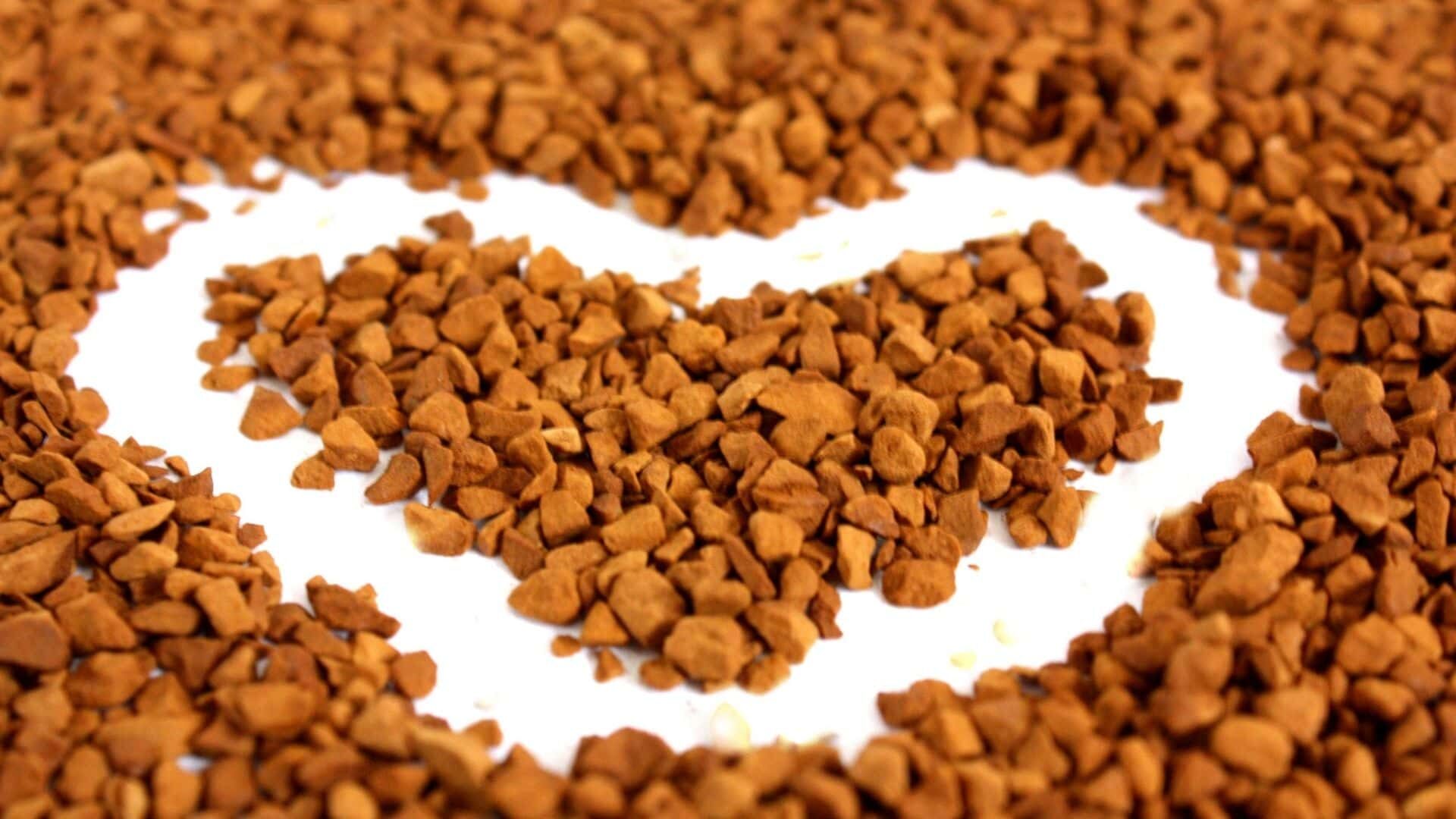
My dogs get kibble and cooked chicken soaking in a flavorful warm broth twice a day like clockwork. Theyre blown away by it. Everybody gets out of bed, even my picky eater, so she doesnt miss out on the feast. To find out if it was worth it to soak my dogs food, I did a little study on the subject:
Dog food can be persuaded to eat by soaking it in a pleasant liquid like broth. If your dog doesnt drink enough water, has a sensitive stomach, or has damaged teeth and cant eat hard kibble, soaking your dogs food can help. Adding wet kibble to your dogs diet can also help them lose weight.
Soaking dry dog food is not recommended by some, as hard kibble eliminates plaque and helps keep teeth healthy. Dry kibbles abrasiveness may theoretically scrape plaque from a dogs teeth, but the reality is more complicated.
Cleaning your dogs teeth by hand is the most effective method. There are a couple of options here: you can wash your dogs teeth or give him dental chews or toys (like these Amazon favourites).
Putting water in kibble has sparked a lot of discussion. People have different opinions about whether or not its worthwhile. In the end, what do we have here? If water is added to kibble, does it outweigh the drawbacks? Here are the arguments for and against each viewpoint.
Although kibble is a popular dog meal, some owners are concerned about how much water is in it. Because food contains water, kibble is disliked by some dog owners, while others enjoy it. Because it aids digestion and ensures that your dog stays properly hydrated, water is an essential part of your dogs daily diet. If your dog doesnt drink enough water from his water bowl, it isnt hazardous to him.
Todays pet food is frequently prepared in the kibble form, which uses high heat and pressure to compress the ingredients into small, spherical pellets. There are several benefits involved with making sure your pets are well hydrated, but this type of diet is lacking in that regard.
As you may be aware, your pets digestive system, weight goals, and the health of important organs like the kidneys and liver are all dependent on adequate water intake.
We also know that it can be difficult to persuade our cats and dogs to drink water, even if its good for them.
10 reasons why you should add water to dogs kibble
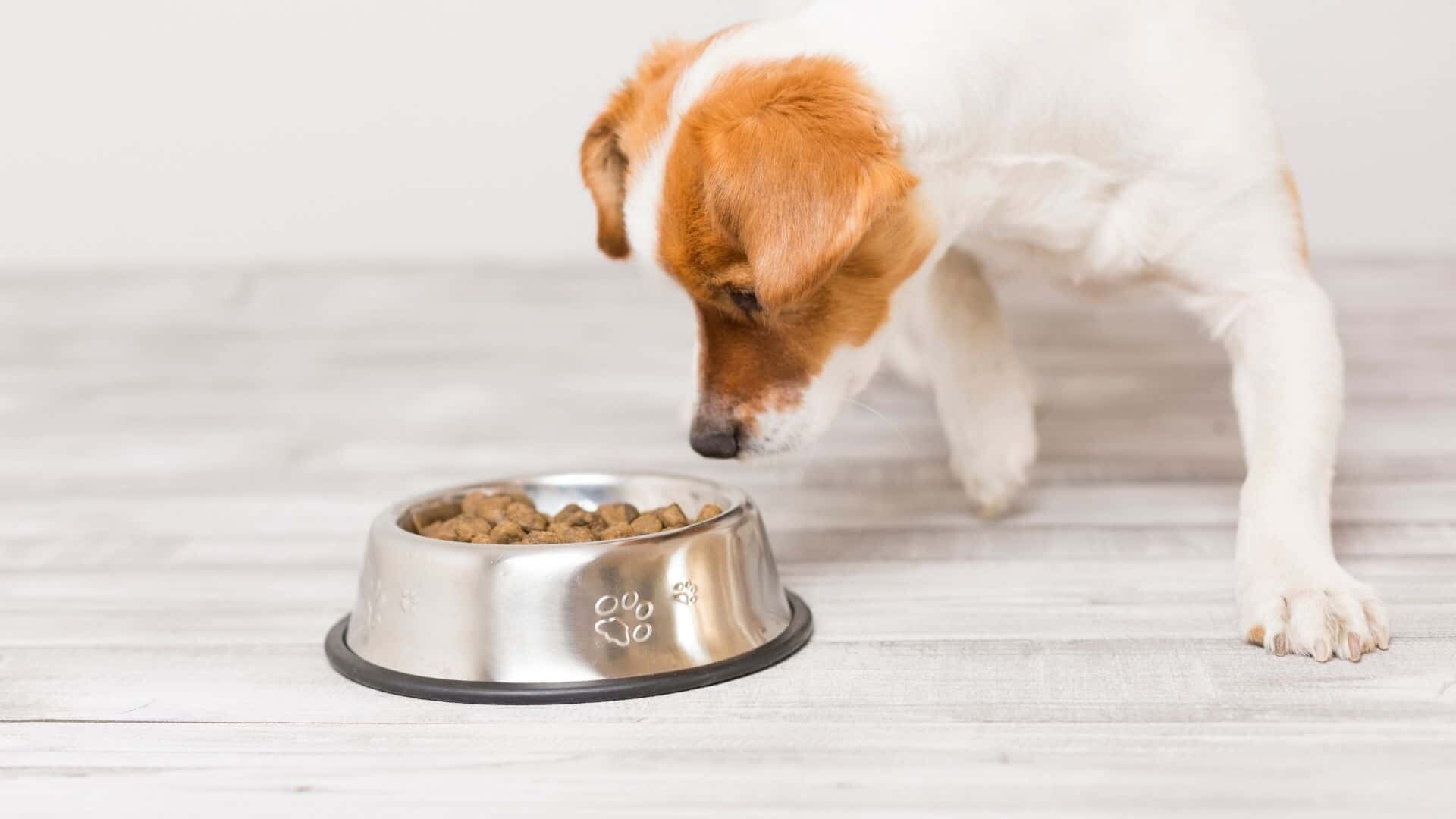
Soaking your dogs food offers many advantages to feeding dry food, as this article explains in detail. You should soak your dogs food for the following ten reasons:
1. Enhances the appeal of the cuisine
While youre pondering the potential health benefits of soaking your dogs kibble, keep in mind that your pets first concern is whether or not the meal hes eating tastes nice. Its good to know soaking kibble results in tastier food.
Most dog owners use homemade chicken or beef broth or just plain water to soak their dogs food.
2. Gulping should be avoided at all costs
Gulping is a term used to describe the act of taking in a significant quantity of food at one time. Some canines may be suffering from a mental condition. Others do it as a matter of course. The presence of food may also be a factor, as they get thrilled when its there. Dogs digestive systems have a hard time breaking down large bits of food when they ingest them all at once. This can even cause the dog to vomit up all he or she has eaten after gulping it down in a hurry.
Gulping in dogs can be solved by adding water to dry dog food. This is due to the fact that water keeps food moist, which makes it difficult for the dog to swallow huge portions of food. In addition, because the food will be so soft, even swiping without chewing will not pose a difficulty for the foods digestion or absorption.
3. Involved in a puppys weaning phase
Puppy milk is the only food a newborn puppy can consume. Youll have to add more food as it develops and becomes more mature. The puppy will have a hard time transitioning to dry food because it has been accustomed to eating milk, which is in liquid form.
As a result, more attention must be taken while selecting the sort of food to feed your puppy throughout the weaning period. Puppy teeth are still developing, and their digestive systems arent yet strong enough to handle food that demands a lot of energy to chew, swallow or digest.
4. Supports digestion and soothes upset stomachs
The soaking of your dogs kibble can help alleviate some of these digestive disorders, such as vomiting, diarrhoea, and constipation.
Food is more easily swallowed and digested when it is moistened with liquid. By doing this, you reduce the amount of work your dogs digestive enzymes have to do to digest the food.
5. Your dog will drink more water because of this
Drinking water might be a challenge for some dogs. This could be due to a number of factors, including the water in the bowl becoming too warm (heres how to keep it cool), the water bowl in the yard becoming a haven for ants and other insects, or your dog simply being unaware of their need.
Soaking your dogs kibble is one technique to ensure that your pet gets adequate water, no matter what the weather is like.
For every pound of body weight, a dog should drink one ounce of water every day. This can be from water, wet dog food, or the liquid used to soak the kibble in. Soaking dog kibble helps your dog consume less water from the water dish because they are already getting liquid from their diet each day.
6.increase the mood of your dogs eating habit
Due to a variety of factors, some dogs have bad feeding habits and will not eat without being lured to their bowls. Adding water to a dry dog kibble generates an enticing aroma that pups find alluring, as discussed before.
Each of the elements in dry food releases a distinct aroma when its broken down. Adding a chicken fragrance to a dish of dog chow, for example, makes it much more appealing. If your dog isnt a fan of dry food, this method of enticing him to eat increases his likelihood of doing so.
7. To maintain your dogs dental wellness
The oral health of puppies and older canines is particularly precarious. Their weak jaws are caused by a lack of growth in young dogs and old age in the older ones.
When you add water to the dry dog food, it will make it easier for the dogs to eat and digest. This will protect their sensitive gums and keep them safe from future harm.
8. Improves the urination of dogs
Kidney and urinary tract infections can occur in dogs who do not consume enough water. Dogs need a lot of water to be hydrated, and this is one of the main reasons why.
Dogs who are prone to these infections can benefit from soaking their kibble in warm water, and soaking kibble can help dogs avoid these infections completely.
9. Can assist your pet in their quest to lose weight
Adding water to your dog or cats food will help them feel more satiated and less hungry. Consumption of fewer calories is encouraged by the fact that the stomach is filled with water. This is especially useful if youre trying to lose weight for your dog or cat.
Because of their diet, your pet may be bloated. As soon as a dry dog or cat food is exposed to moisture, it expands. The risk of bloat or stomach torsion is increased when this occurs in the digestive tract, resulting in hazardous swelling and bloating.
Pre-soaking the kibble reduces this risk and helps your pet maintain a healthy body weight.
Increasing your pets water intake might also help with regularity issues like constipation and water retention.
10. Easier to eat food
Soaking your dogs kibble makes it easier for them to consume, especially if they have a difficulty with their teeth or have lost their teeth for any reason.
What are the pros and cons of putting water in dogs kibble?

Pros of putting water in dogs kibble
- If a picky eater smells the wet food, he or she will consume the dry food.
- The moisture content of food that has been wetted will rise.
- If you soak your dogs food beforehand, you can reduce the likelihood of stomach upsets.
- Adding warm water to your dogs food can encourage him to eat it if he normally does not.
- Some dogs prefer canned food to kibble because of its palatability.
- Bringing some tasty canned food along with their kibble can help dogs who are going to be away from home for an extended period of time keep up their normal eating habits.
- Adding water to the kibble will help soften it and make it simpler for your dog to eat if he has diarrhoea.
- If your dog has eaten all of his food, you can reward him with a treat in order to get his attention.
- As a precaution for dogs with kidney issues, you might want to consider adding a little extra moisture to their food.
Cons of putting water in dogs kibble
- Preservatives are more prevalent in wet food than they are in dry food.
- Its possible that youll create a situation where the dog refuses to consume dry food.
- Dogs arent allowed to graze on their own food. 2030 minutes after serving wet food or a dry/wet mix, it should be thrown.
- Adding water to medication makes it more difficult to measure out the dosage, making it more difficult to administer your dogs prescribed drugs.
- Doing so may result in diarrhoea, which is why some people advise against it unless your dog is already suffering from it.
- To make your dogs kibble more difficult to swallow, you may want to add a small amount of warm water to his water bowl.
How long may wet kibble be kept out?
The kibble does not contain any preservatives, therefore its crucial to keep that in mind while adding water to it. In the event that your dog consumes all of his food in one sitting, you dont need to worry about storing the extra food in his dish.
It is vital to keep in mind that bacteria can grow if your dog is a slow eater or you want to put the wet kibble in your dogs bowl overnight.
Because wet kibble can become a breeding ground for bacteria, you should always throw it after 12 hours.
Even if the wet kibble is left out for more than 12 hours, it may not go bad if you take this precaution.
There is no need to add water to your dogs kibble, but it may be beneficial for some. The wet kibble softens the dry nuggets and makes them easier for your dog to eat, while also boosting their desire for more food.
There are, however, drawbacks. Bacteria can form on the wet kibble if you leave it out for too long, which can cause disease or even death! Try soaking the kibble in warm water for a few minutes before feeding to ensure that your pet gets all of its nutritious benefits without risking any negative side effects from keeping it out for too long.
Things to keep in mind while putting water in kibble
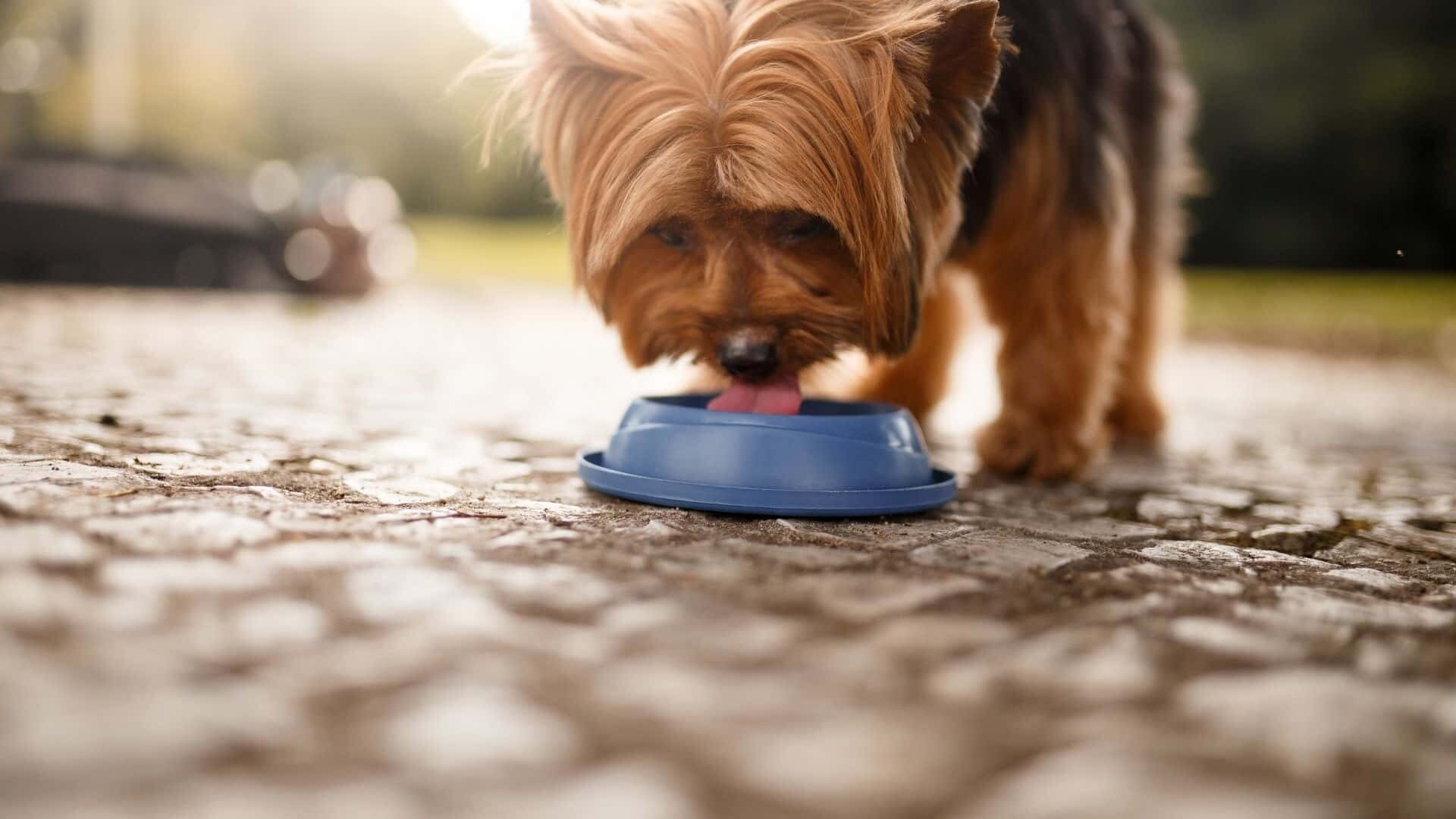
When adding water to dog kibble, there are few things to keep in mind.
1. Temperatures are a factor
Due to the high temperatures, your four-legged best friend will drink more water during the summer. As a result, water added to kibble should be fed often throughout this time of year. Adding a modest amount to the dogs kibble four or five times a day is preferable.
2. Serving size of dog food
Youll need to keep a close eye on the ratio of water to the dogs kibble in order to avoid overfeeding them. A cup of dog kibble can be made moist by adding half a cup of water. Remember that the purpose is to moisten, not drown, the meal.
3. Preferences of your canine companion
In terms of how they prefer to eat, every dog is unique. People have different preferences when it comes to how wet or mushy their meal has to be. As the days go by, gradually increase the amount of water you add to the mixture to get a sense of what they want.
4. The waters temperature
The slower the water softens the dogs kibble, the better; therefore, use only lukewarm water. After youve added water to the kibble, dont leave it out for your dog to eat for too long.
Watch Preparing a dogs dinner by soaking their food | Video
Top 5 FAQs and answers related to Pros and cons of putting water in dogs kibble
Why adding water to kibble is recommended?
When giving a dry kibble, adding water to your dogs food bowl will help speed up digestion. Digestion is greatly aided by commencing the breakdown of food particles by hydrating the dogs stomach content.
Is it unhealthy for dogs to moisten their kibble?
When it comes to fat content, wet foods tend to be higher than dry ones. Some dogs, particularly those susceptible to pancreatitis or sensitive to fatty diets, may find this to be an unhealthy amount of fat. A dogs tartar buildup may be accelerated by eating wet food, as opposed to dry food, which can help prevent tartar buildup.
To soak kibble, how long should I leave it out?
Its important to know how long to soak puppy food. To loosen and soften puppy food, soak it for 10 to 15 minutes. This makes it easier for puppies, who are still developing their teeth, to eat because their jaws are still soft.
Whether or not adding water to dry food cause bloating in dogs?
In the event that your dog is at risk of bloating. If a dog has a tendency to consume a lot of water after a dry meal, putting water in his stomach on top of the dry food could lead to bloat.
How do you soak the kibble?
A half cup of water to a cup of kibble is the ideal ratio, although you can modify the ratios to your pleasure. The sooner the kibble softens, the hotter the water must be.
Conclusion
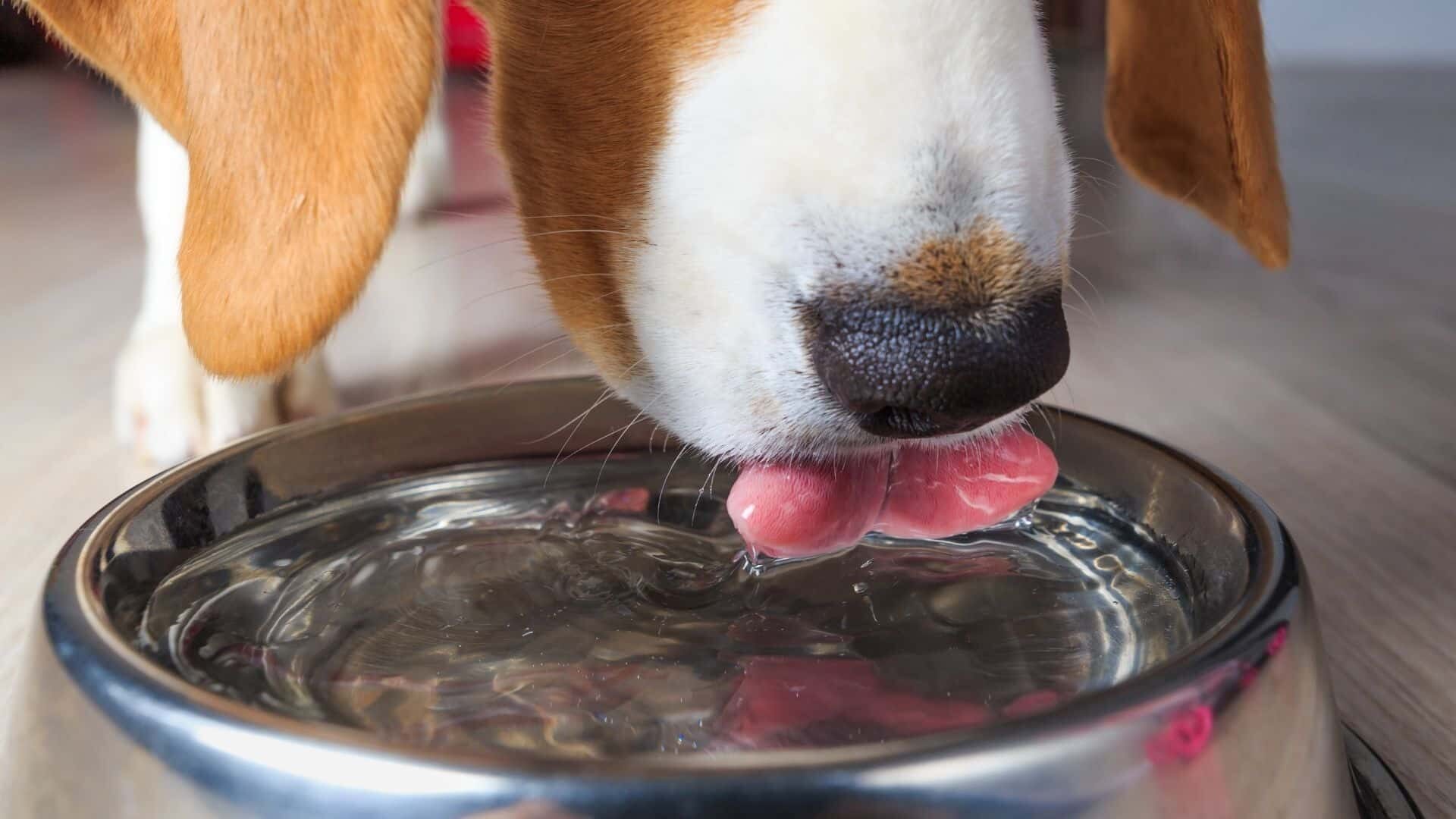
Its not a universally held belief that dry kibble should contain water or other liquids, but its one that I wholeheartedly support. There are far too many advantages and few drawbacks to doing so.
Dogs with dental or digestive disorders, overweight or obese pets, and puppies can benefit from adding liquid to their diet. Bloat may be less of a problem as a result.
Bottom up
So, I hope you got the full idea onTop 10 Pros and Cons of Putting Water in Dogs Kibble: Guide.
Please comment below about your ideas and share this Top 10 Pros and Cons of Putting Water in Dogs Kibble: Guide article with your friends.
Stay tuned with ourwebsiteto find out more exciting stuff. Dont forget to check out our previous articles too.
Until the, Read about,When Do Blue Heelers Calm Down (At What Age): Guide

